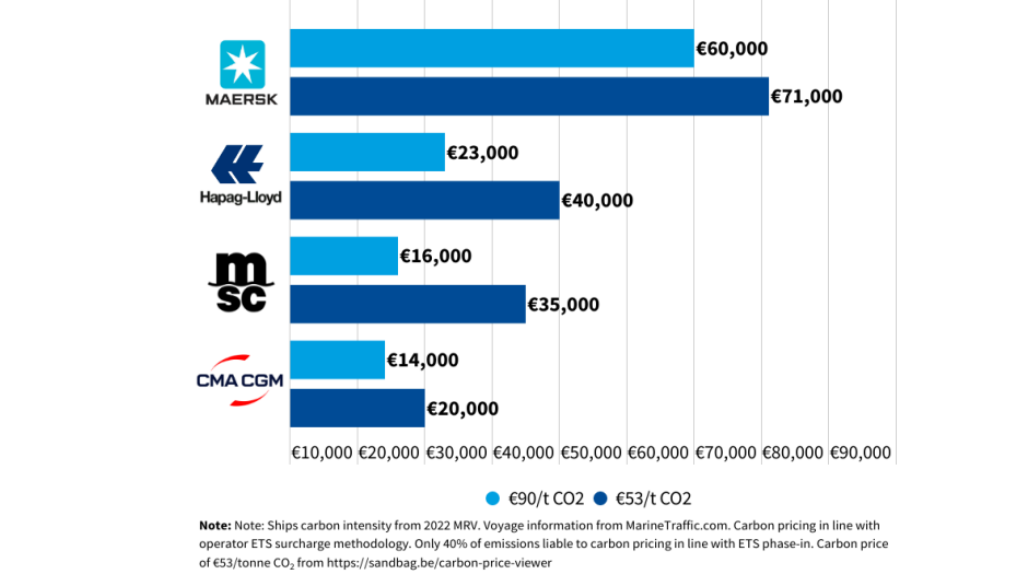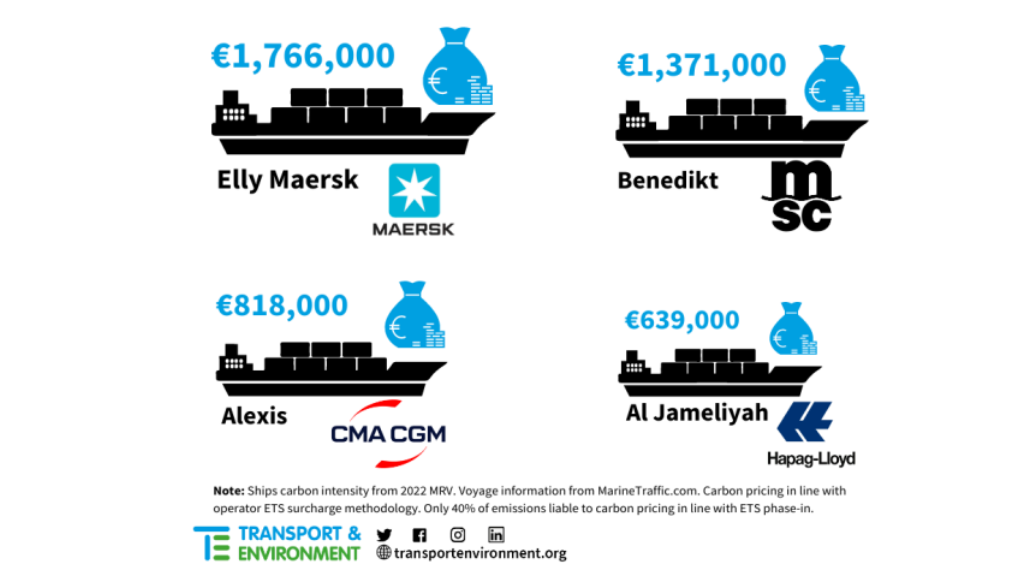An analysis of container shipping ETS surcharges
Recent analysis of Transport&Environment sheds light on the critical need for policy interventions to ensure the effective regulation of emissions within the shipping industry. As the sector navigates the transition towards greener practices, concerted efforts are essential to mitigate environmental impact while fostering economic sustainability.
The analysis, which examined over 560 individual journeys from 20 ships of each major EU shipping company—MSC, Maersk, Hapag-Lloyd, and CMA CGM—revealed a striking trend. Despite the incremental costs imposed by the ETS, the surcharges levied by these companies appear to surpass the anticipated expenses significantly.
In a landmark move towards decarbonizing the shipping industry, the EU’s introduction of the Shipping Emission Trading System (ETS) on January 1, 2024, marked a significant step towards regulating the carbon footprint of maritime transportation. However, a recent analysis reveals a striking disparity between the projected costs and surcharges implemented by major container shipping companies, potentially leading to substantial windfall profits.
Under the EU’s Emission Trading System, shipping companies are obligated to purchase emission allowances covering a portion of their carbon emissions. Initially set at 40% in 2024, this requirement will progressively increase to 70% by 2025 and reach 100% by 2026. To offset these costs, major shipping companies have introduced ETS surcharges, passing the financial burden to their customers.

Key Findings & Implications
- European container shipping companies are projected to amass substantial windfall profits due to the discrepancy between their expected ETS costs and the surcharges imposed on customers.
- The analysis suggests that these surcharges are poised to yield substantial profits for shipping companies, with some journeys projecting windfall profits as high as €325,000.
- Notably, the analysis underscores the profitability of European ports, debunking claims of potential traffic loss due to the ETS implementation.
- The ETS surcharges raise questions about the efficacy of emissions pricing alone in driving decarbonization efforts within the shipping industry.
- The disparity between projected costs and surcharge revenues highlights the need for comprehensive energy efficiency legislation at both the EU and international levels.
- Policy-makers must acknowledge the complexities of shipping decarbonization and implement a multi-faceted approach encompassing emissions pricing, fuel standards, and energy efficiency measures.
Image source: transportenvironment.org

